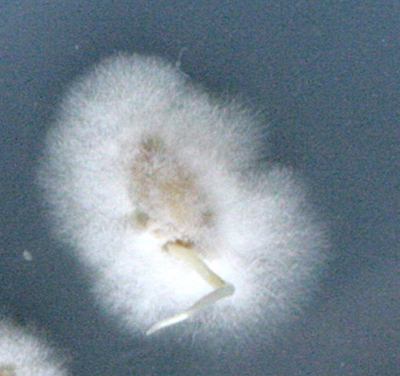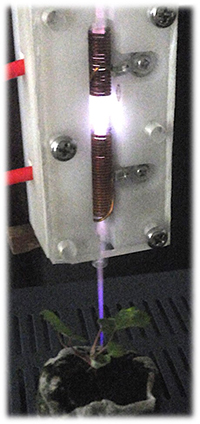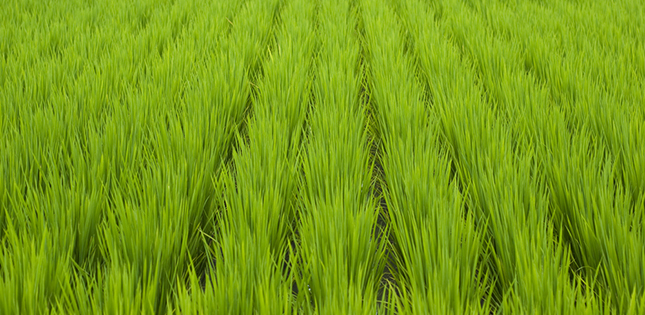Diseased rice seeds treated with atmospheric plasma show significant improvement and growth, offering a potential tool to protect rice crops from fungus and blight.
A team from Tohoku University in Japan found that immersing infected rice seeds in hot water and then irradiating them with plasma reduced infection rates between 60 and 90 percent.
Plasma is the fourth state of matter along with solid, liquid and gas. It is a cloud of electrons that creates positive and negative ions, as well as neutral atoms. Plasma is emerging as a disinfectant in a variety of applications, including wounds and crops. It is used to sterilize crops after the harvest, where there is little concern about damaging living cells.
The Tohoku team, led by Professors Hideki Takahashi and Toshiro Kaneko, tested the effects of plasma irradiation on healthy rice seeds, on rice seeds infected with bakanae disease, caused by the fungal pathogen Fusarium fujikuroi, and on seeds infected by bacterial seedling blight, caused by Burkholderia plantarii.

Colony of Fusarium fujikuroi formed by cultivation of infected rice seed on Komada's selective medium
Credit: Hideki Takahashi
The two diseases are major threats to rice crops worldwide. For example, Japan has reported 20 to 50 percent yield losses due to bakanae, and the United States has experienced 40 percent yield loss due to B. plantarii.
Often, rice seeds are treated in 60°C hot water for ten minutes to kill any bacteria before cultivation in greenhouse nurseries. However, if the rice is not left in the scalding water long enough or if the water is not quite hot enough, bacteria survives and can inhibit growth.
The team found the most effective way to reduce disease rates was the hot water bath followed by plasma irradiation. There was no damage to the seeds, which germinated and grew like healthy seedlings.

Atmospheric pressure plasma jet irradiated to plants
Credit: Toshiro Kaneko
"The combination of water immersion and plasma irradiation of rice seeds seems to provide an excellent pest integrated management system to reduce risks to human health and the environment by minimizing the use of chemical pesticides," the researchers conclude in their study recently published in the journal Plant Pathology. How exactly the plasma treatment helps suppress the diseases remains a mystery. The researchers suspect that reactive oxygen compounds generated by irradiation play a role, but this requires further study.
- Publication Details:
Title: Management of bakanae and bacterial seedling blight diseases in nurseries by irradiating rice seeds with atmospheric plasma
Authors: Ochi, A., Konishi, H., Ando, S., Sato, K., Yokoyama, K., Tsushima, S., Yoshida, S., Morikawa, T., Kaneko, T. and Takahashi, H.
Journal: Plant Pathol, 66: 67-76.
DOI: 10.1111/ppa.12555
Contact:
Hideki TakahashiGraduate School of Agricultural Science
Email: hideki.takahashi.d5@tohoku.ac.jp
Website: http://www.agri.tohoku.ac.jp/en/about/organization/graduate/ppathol/index.html
Toshiro Kaneko
Graduate School of Engineering
Email: kaneko@ecei.tohoku.ac.jp
Website: http://www.plasma.ecei.tohoku.ac.jp/Kaneko_lab/eng.html

